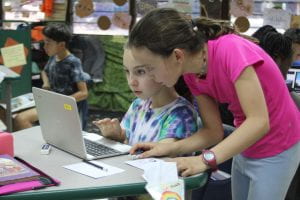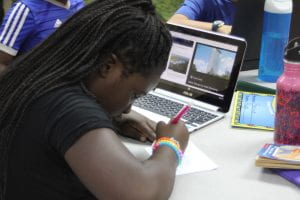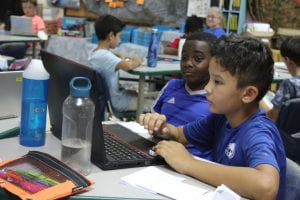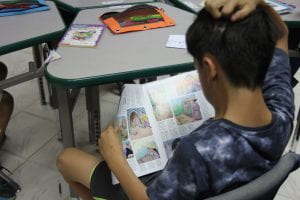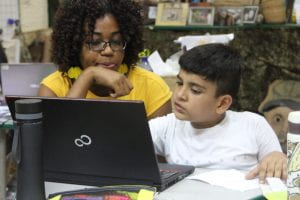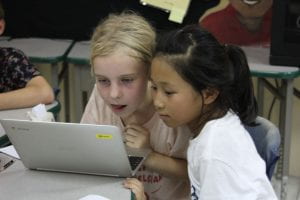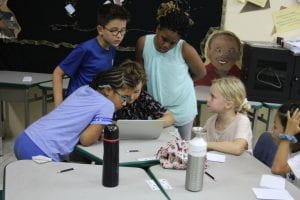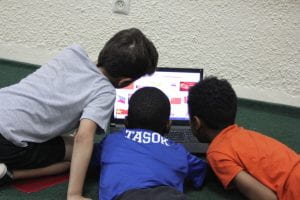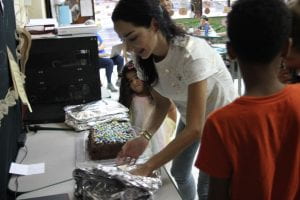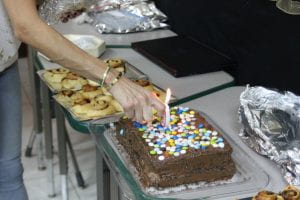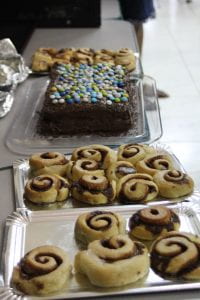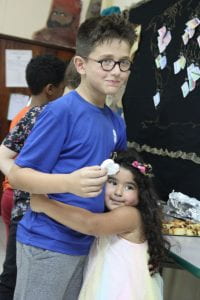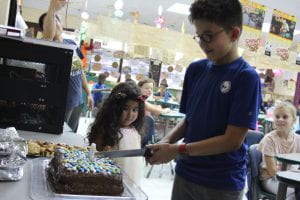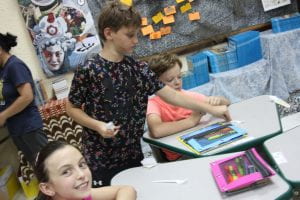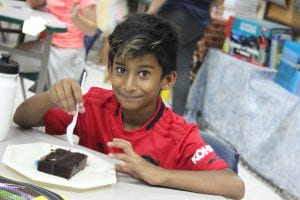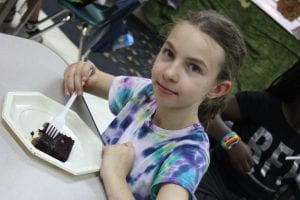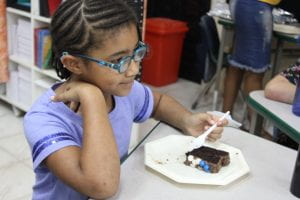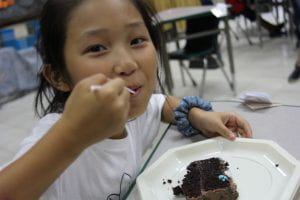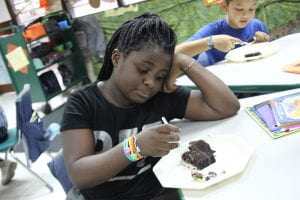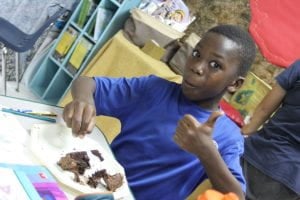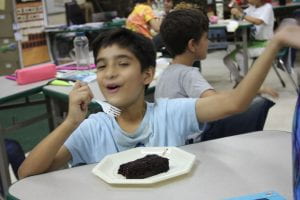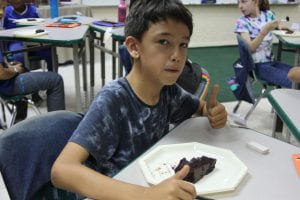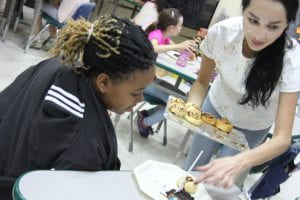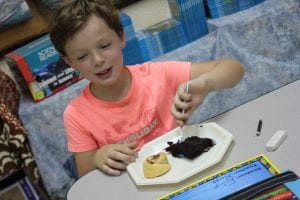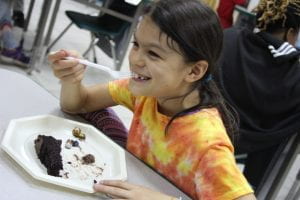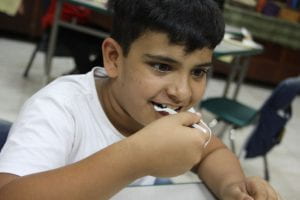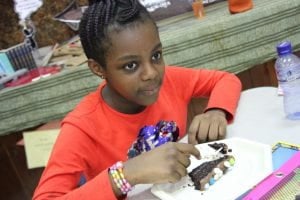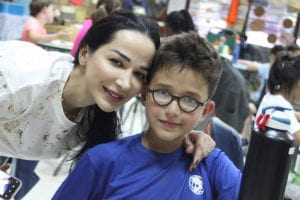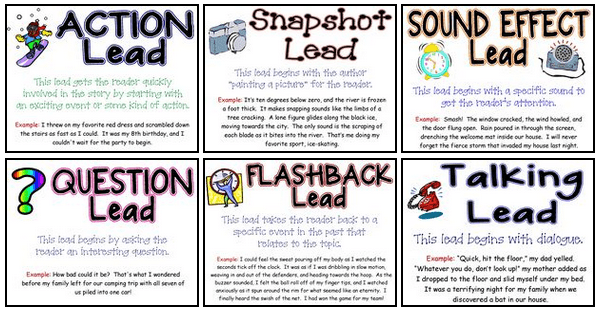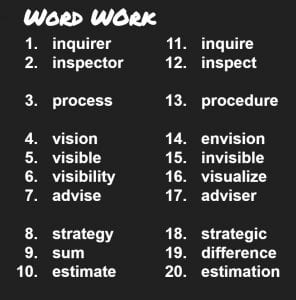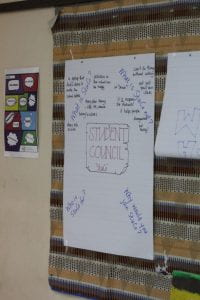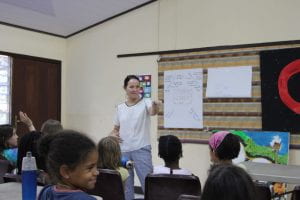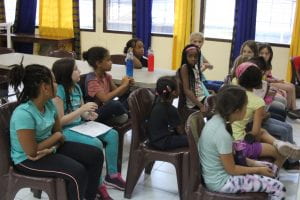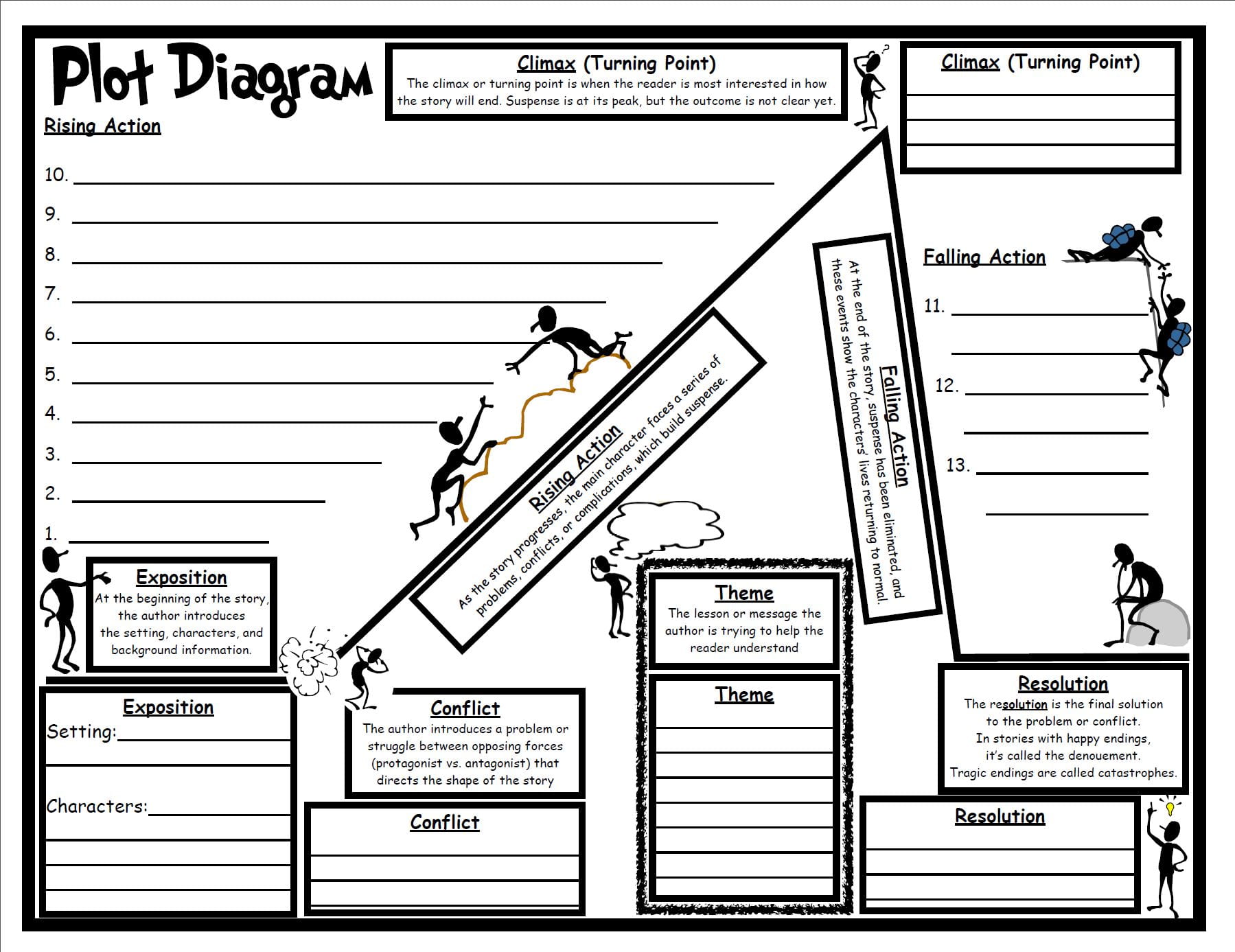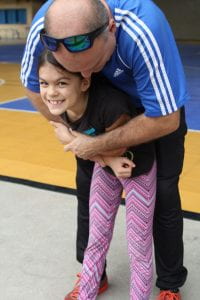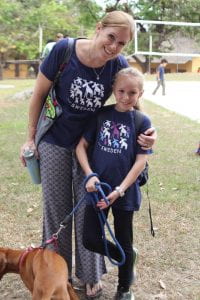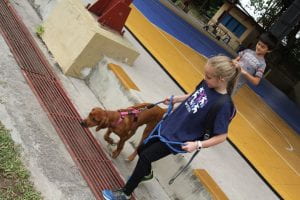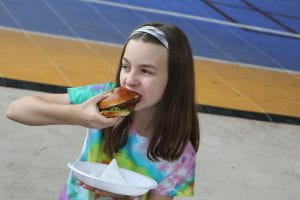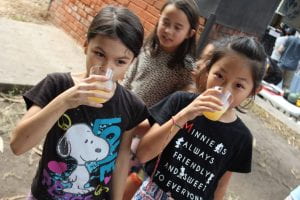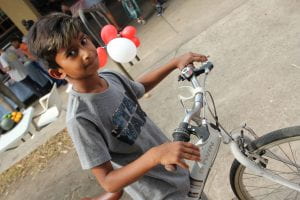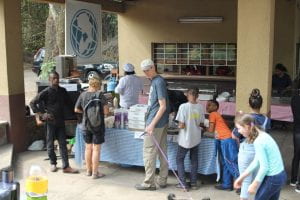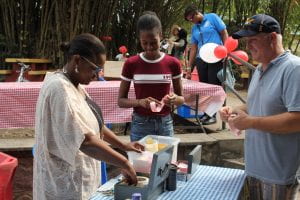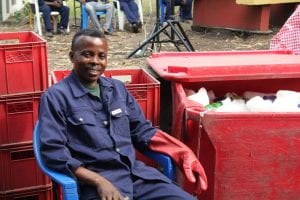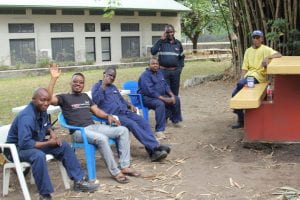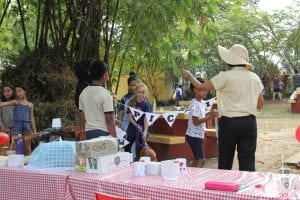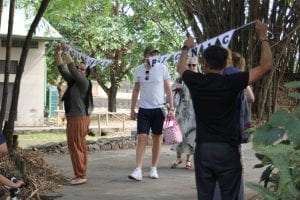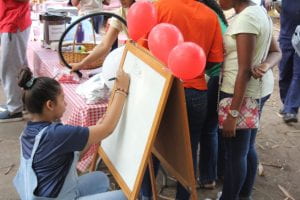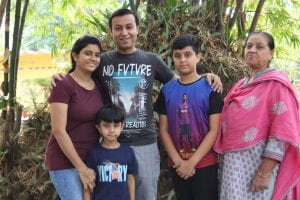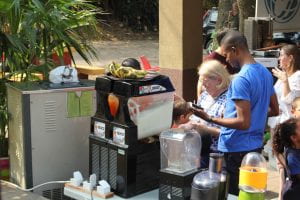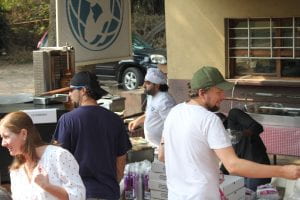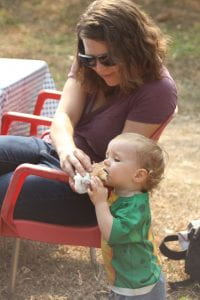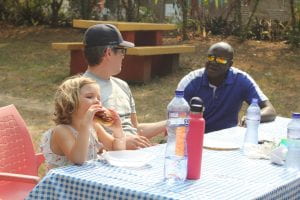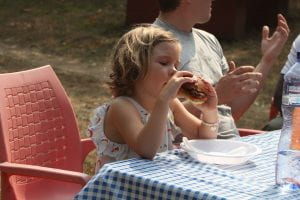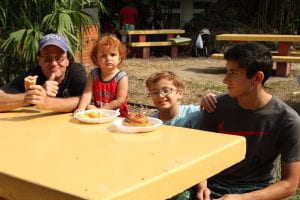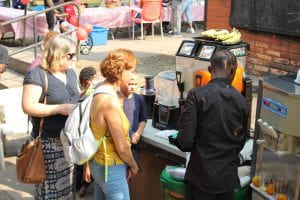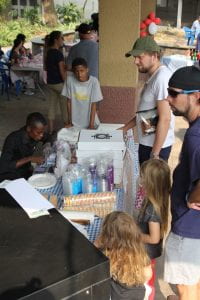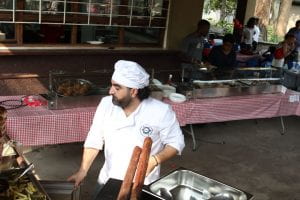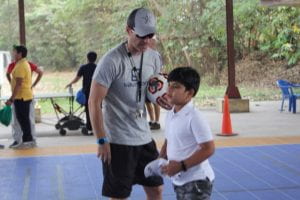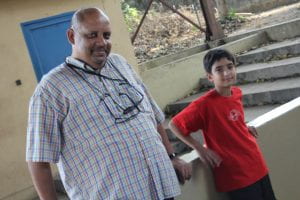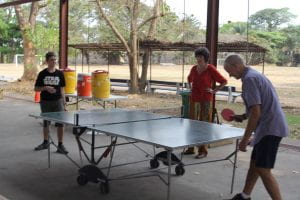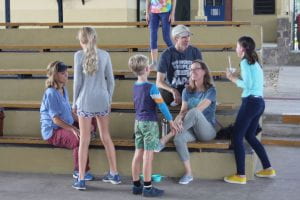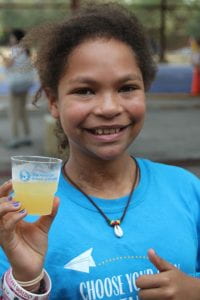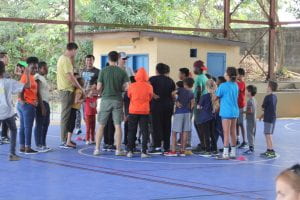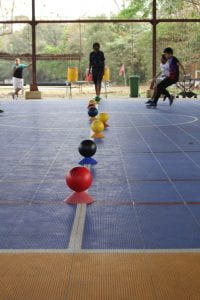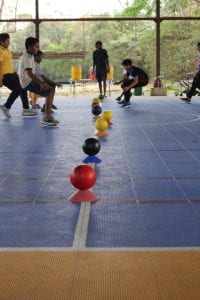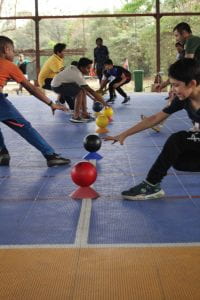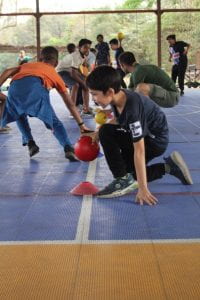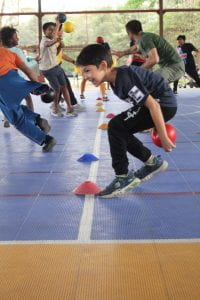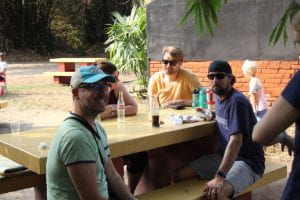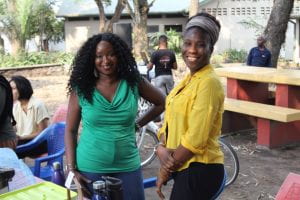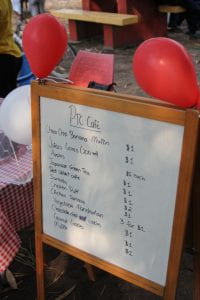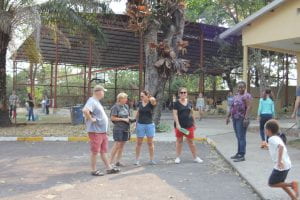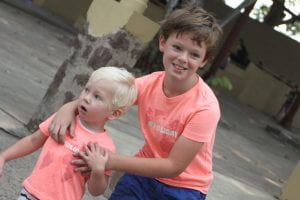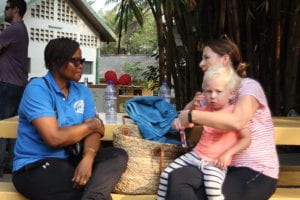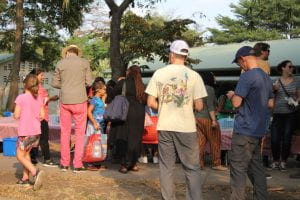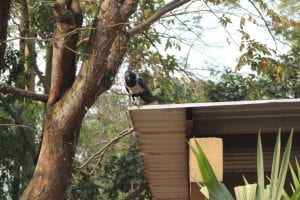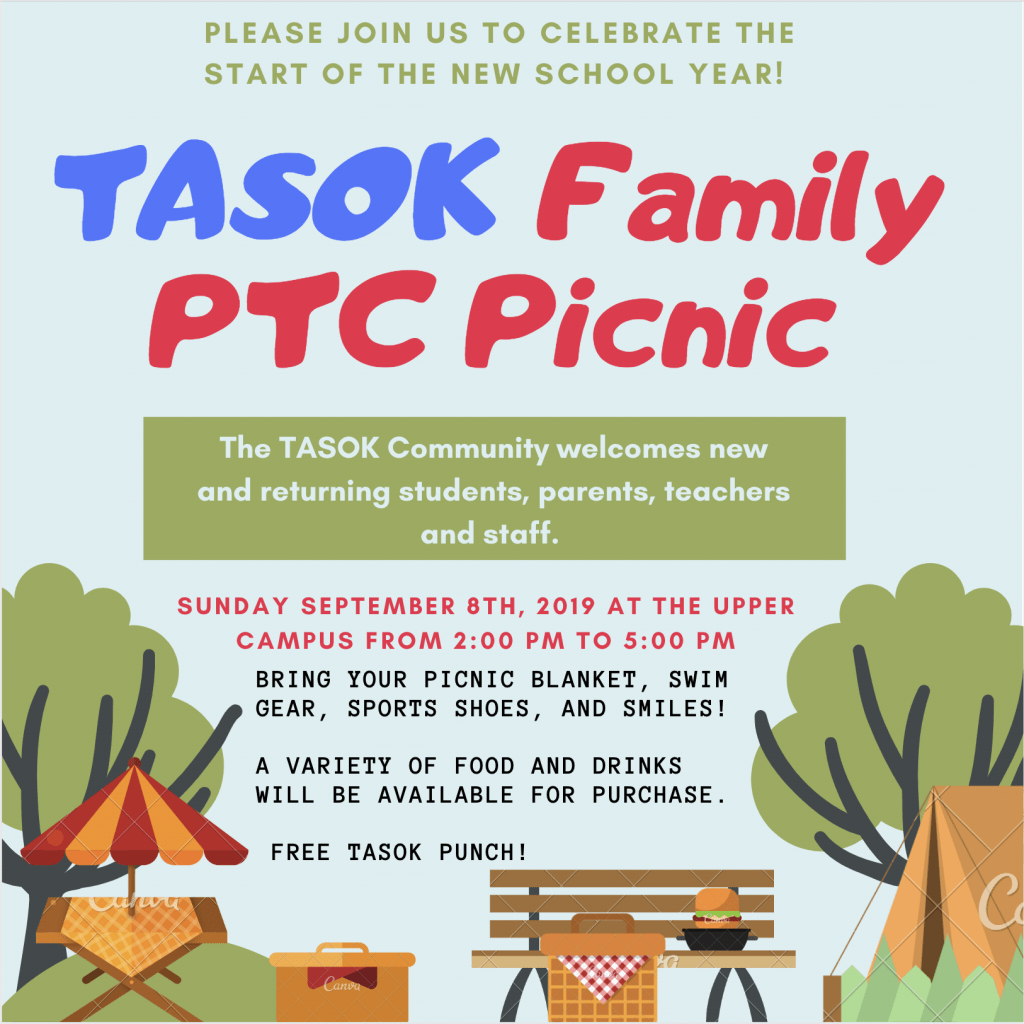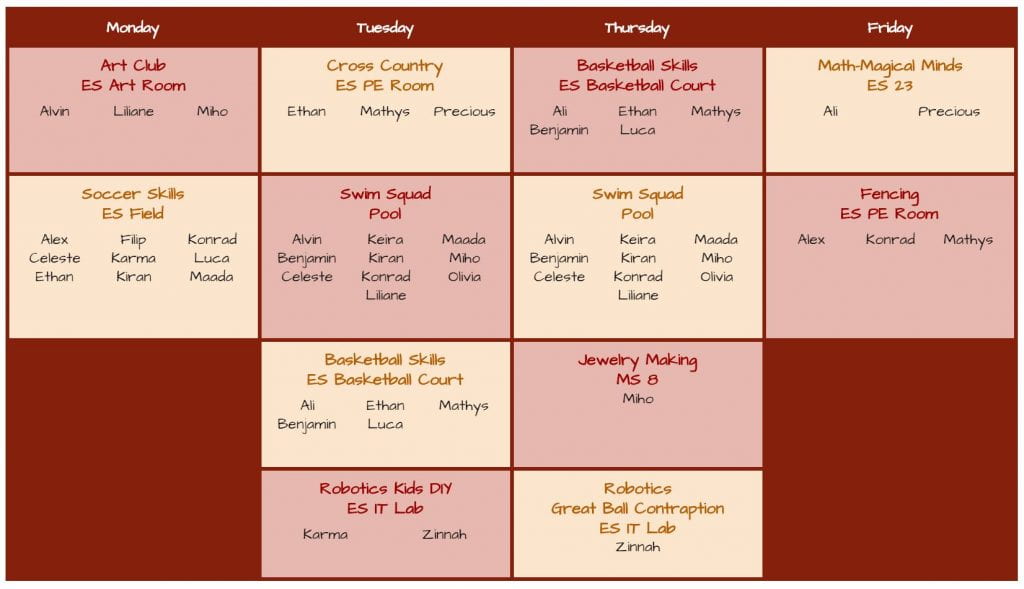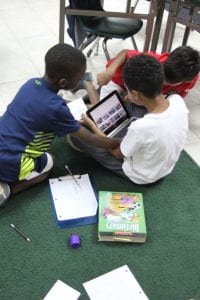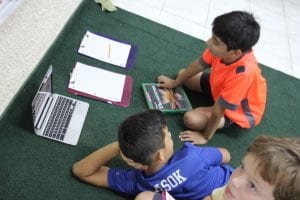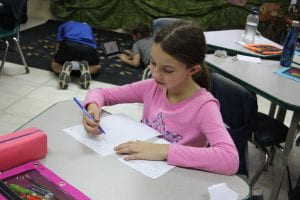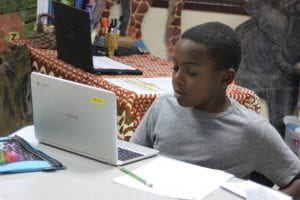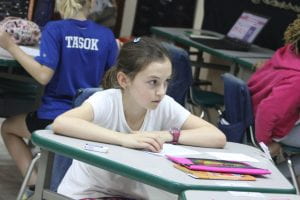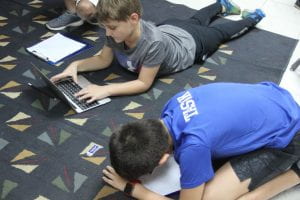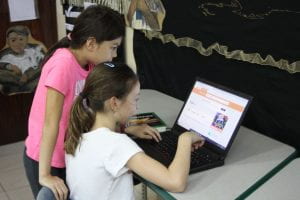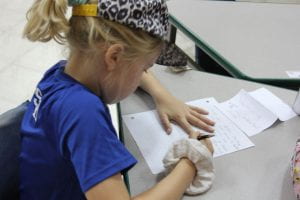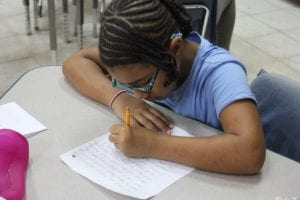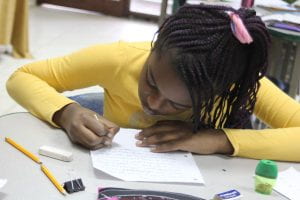Each year, on (or around) September 15, the world celebrates… dots. Well, not just any old dots, The Dot.
This year… we, the scholars of fourth grade, celebrated, too.
We began by reading The Dot. Watch and listen to a reading of the book by the author, Peter Reynolds.
This prompted a brief, but thoughtful discussion of the text. We tracked Vashti’s feelings as she went from thinking she couldn’t draw (sad, discouraged, sore hearted) to anger in response to being prompted to, “Just make a mark.” After her teacher framed her mark, a simple dot, Vashti demonstrated that she had a growth mindset by stating, “I can make a better dot that THAT!”

As she experimented with various sizes, shapes, and colors, Vashti became more creative, joyful, and confident. In the end, she was able to pass on her learnings and encouragement to someone who started out in the same sore-hearted place. How exciting to see Vashti be transformed into a problem solver and a bucket filler.
One interesting observation that was made during our discussion was related to the dot-shaped background that sort of served as a spotlight in the book. As readers, we were curious about Peter Reynold’s (who is also the illustrator) use of this technique to draw our attention to the character. We were also wondering if the color of these spotlight dots had special significance.
If you choose to reread the book or watch Mr. Reynold’s reading of it, use your detective eyes to notice the size of the dots. At the beginning, Vashti makes a tiny speck on her paper. Gradually, her dots grow and grow until they fill large spaces. Why do you think the author-illustrator did that? Does the size of the dots symbolize something? Was this intentional? Don’t you wish we could ask the author? Perhaps we can…
To wrap up our discussion, we talked about the multiple meanings of the phrase “make your mark.” Of course, making a physical mark on a page is one option, but… is there a deeper meaning? Is there a meaning we can apply to our own lives. Indeed, there is… when someone asks, “How are you going to make your mark?” they are really asking,…
“How are you going to change something?”
This will be an important question this week as we continue to inquire about problem solvers.
To learn more about International Dot Day and how other people celebrated, check out the official webpage:
Listen to a presentation of Dot Day 2016 featuring author Peter Reynolds and the teacher who started Dot Day.
Check out some other ways International Dot Day was celebrated as highlighted on:
(Do any of these activities look familiar?)
Finally, be dazzled by Peter Reynolds as he dapples with dozens of dots. Be inspired!

